Work Wear
The latest in uniform trends, visibility and industry-specific fashion
A great work uniform not only makes your employees feel and look good, but it also increases positive brand recognition and company image, and helps promote safety in the workplace. A 2013 survey conducted for Cintas Corporation by Harris Interactive® revealed that nearly 65 percent of U.S. adults said that uniformed employees give them a positive perception of a company. Survey respondents also said that uniformed employees made the company feel like a more secure place to do business and made them more likely to do business with the company.
So what constitutes a uniform in today’s more casual culture? A uniform is any type of clothing that is worn on the job such as scrubs, company-issued t-shirts, aprons, lab coats, vests, hard hats, jackets and caps. But a uniform is not a company uniform without a logo on it. Branding turns a company uniform into a walking billboard that will hopefully attract new customers. So it’s important to put considerable thought into creating just the right branded uniform, and you can start by knowing what’s trending.
“The active, outdoor and athleisure markets continue to be a major influence across all apparel segments, including uniforms,” says Susan Kohout, marketing director for Fort Worth, Texas-based supplier Dickies Occupational Wear (UPIC: dickies). Those influences mean that uniform fabrics must be driven by comfort, durability and easy care.
Dickies designs its uniform garments specifically for today’s workforce and the challenges customers face on the worksite. Kohout says, “To enhance our customers’ experience, our fabric innovations include enhanced cooling, ventilation, wicking, breathability and stretch for greater range of motion.” These innovations are the foundation of Dickies’ Workbench, Automotive Shop and Tactical product collections, and their Core Service uniform offering includes key performance fabrics as well.
With construction growing at a rapid pace in 2016--the infrastructure construction backlog indicator (CBI) grew 24 percent in Q1 this year, showing strong industry growth--branded uniform safety apparel, such as safety vests and hard hats, will be in demand. “One of the most important things distributors need to understand about safety apparel is the ANSI certification ratings,” says Joanna Waldman, marketing coordinator at Starline USA, Inc. (UPIC: STAR0009) in Grand Island, New York. “They need to know the importance of each safety rating; does the product have the proper ANSI certification rating in order to be used in the field for everyday use? By knowing all of this information before going into a sales meeting you are sure to get that order if you know what they are looking for.” (See below for more information on ANSI ratings).
Waldman notes that lighter-weight uniforms are particularly in demand. “Our clients are asking for lightweight/breathable fabrics and Velcro® [brand hook and loop fastener] closures that offer a break-away feature, which is very valuable in factory situations.”
Uniformly Wearable
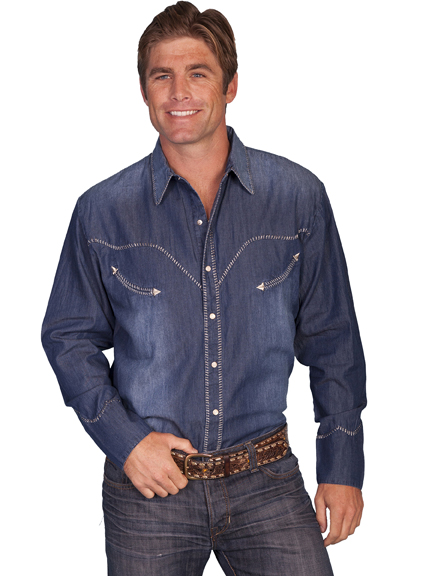
For workplaces where Western attire is fitting, this denim shirt fills the bill. It features a contrast whip stitch throughout and two front smiley pockets. A snap-front closure with snap cuffs makes dressing a cinch.
Scully Leather UPIC: S174962 www.scullyleather.com
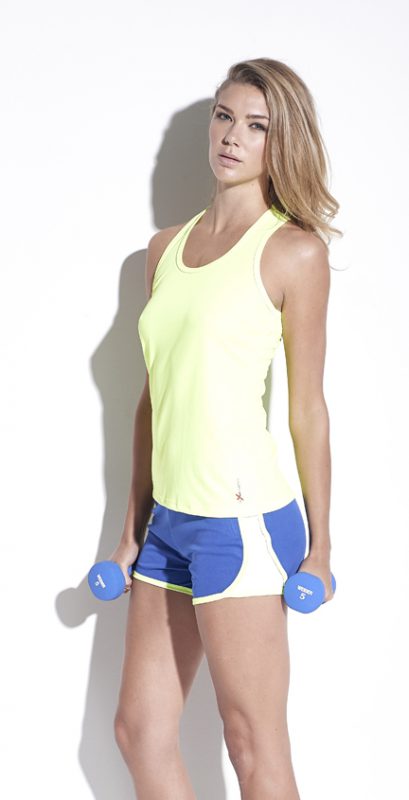
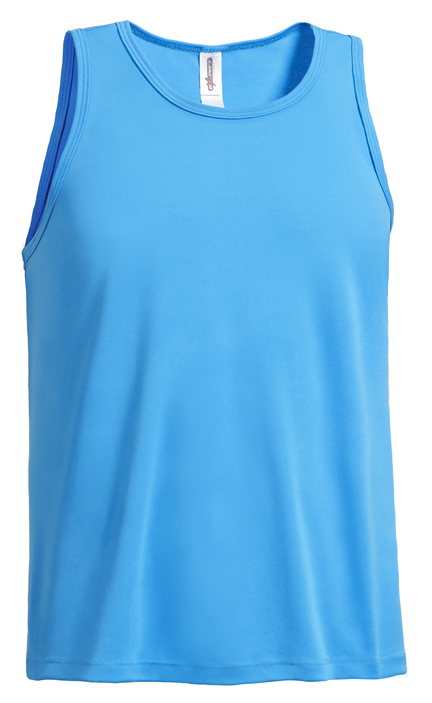
Perfect for health and fitness uniform needs, the Women’s Go Active Short embraces both style and femininity. A contrast cross-cut bias offers an active look, while its performance features, such as inherent moisture wicking and BodyFreshé treatment (to inhibit the growth of odor-causing bacteria), provides protection and comfort. The Men’s Workout Tech style offers an innovative, breathable eyelet mesh back to help keep the wearer cool and comfortable. Its offset side seams cut down on the chances of chafing, while the overall athletic fit allows for plenty of room to lift and stretch. Other features include moisture wicking, BodyFreshé treatment and easy care properties.
Expert Brand UPIC: Exper698 www.expertbrand.com

KOOLGATOR Cooling Neck Wraps provide a branded cooling solution to employees who work in the heat. White fabric is digitally printed in full color with any designs, logos, messages or photographs that a company wants. The cooling effect lasts all day and requires no ice or refrigeration. Simply soak in water, wear and splash with water to refresh throughout the day. Pitch these wraps to the construction industry, outdoor sporting event staff and participants, and pool/beach staff at hot-weather resorts.
Koolgator, LLC UPIC: KOOLGATR www.koolgator.com
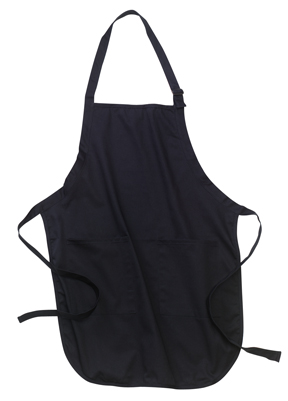
Retail, restaurant and other service environments need good-looking and utilitarian aprons. This seven-ounce, 100-percent cotton apron fits the bill. It has a soil-release finish and gives you full-length protection from spills and splatters. Two waist-level patch pockets and a pen pocket provide convenience for storing necessary items. Choose from nine colors including black, classic navy, coffee bean, hunter, maroon, red, royal, stone and white.
SanMar UPIC: SNMR www.sanmar.com
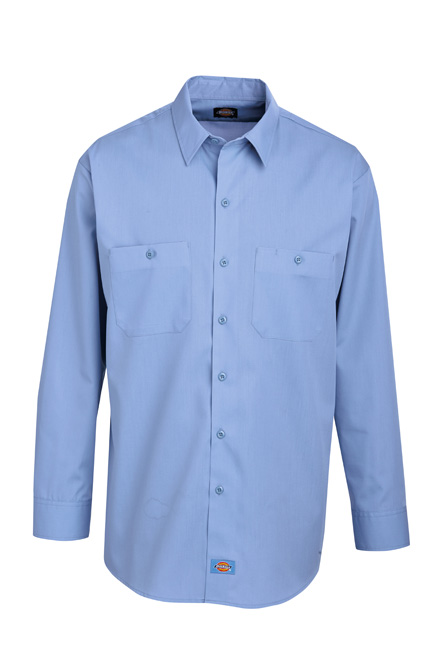
In an industrial setting, comfort and protection are critical. This WorkTech performance shirt is made from mechanical stretch poplin and is 65-percent polyester/35-percent cotton. The shirt both ventilates and cools, providing relief from heat exposure.
Dickies Occupational Wear UPIC: dickies www.dickiesb2b.com
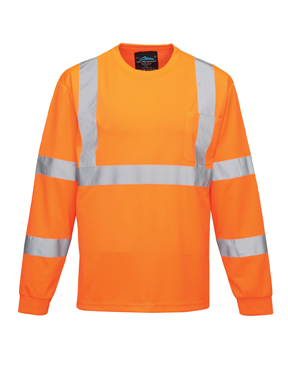
Stay both cool and visible with this 5.2-ounce 100-percent polyester mesh crewneck long sleeve shirt featuring UltraCool® moisture-wicking technology. With two-inch reflective tape, a left chest Velcro® brand hook and loop fastener pocket and self-fabric cuffs, this shirt meets ANSI/ISEA 107-2010 Standards, Class 3/Level 2.
Tri-Mountain UPIC: TRIM0003 www.trimountain.com
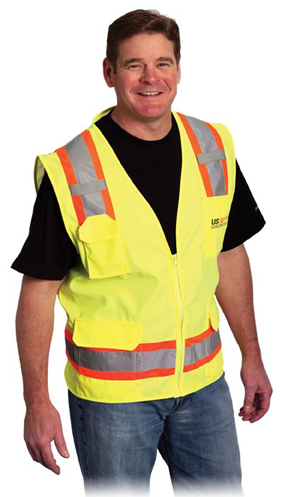
The Two-Tone 6 Pocket Surveyors Vest, ANSI/ISEA 107 Class 2 vest is intended for workers performing tasks that divert their attention from approaching traffic that is traveling more than 25 mph. Made from durable polyester, the vest features a solid front and breathable mesh back, as well as two-inch two-tone tape for optimum visibility and multiple pockets. It’s available in sizes M-5X in yellow and orange. A standard one-color logo or a TruColor™ multicolor imprint are priced the same.
Starline USA, Inc. UPIC: STAR0009 www.starline.com
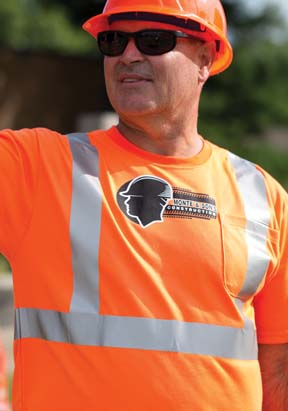
The CornerStone® CS401 safety T-shirt is designed for high visibility and job-site safety. Available in a choice of safety orange or yellow, it features two-inch wide reflective taping on the front and back and is ANSI/ISEA 107 Class 2 certified. Made of 5.9-ounce, 100-percent polyester interlock, it wicks moisture and can be machine washed and tumble dried. It is screen-printable and can be heat-pressed using special care (garment temperature not to exceed 320 degrees Fahrenheit). It comes in adult sizes XS-4X.
Stahls’ Transfer Express UPIC: STAH0001 www.transferexpress.com
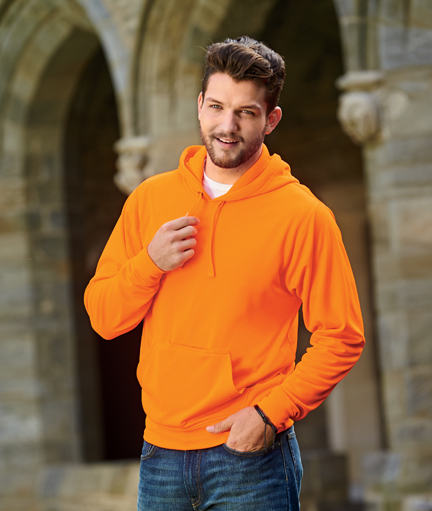
For an outer uniform layer, try the Huzu Tailgate Hoody with an insulated Neoprene pocket to keep a drink cold and your hands free while you’re working on the job. The pocket is also a secure storage spot for a cell phone, wallet or other valuables.
America Blanks (Wholesale Blanks Division) UPIC: blanks www.jamericablanks.com
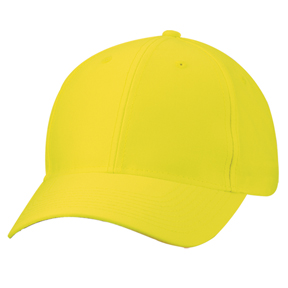
Add visibility with this bright cap. Made of 100-percent polyester, the hat has a structured, mid-profile, six-panel design. It features a pre-curved visor with a black undervisor and a self-fabric Flex-Strap™ closure. One size fits most. Colors include neon yellow and blaze orange.
Kati Sportcap UPIC: KATI www.katisportcap.com
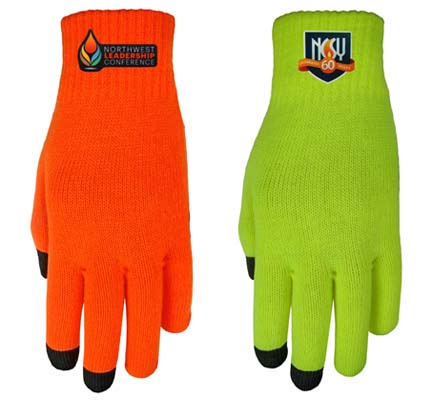
These 100-percent acrylic knit three-finger activation text gloves come in two safety colors: fluorescent yellow-green and fluorescent orange. Conducting fibers located in three fingertips make these gloves fully compatible with touch screen devices for safer use on the job.
Suntex Industries UPIC: SUNTEX www.suntexindustries.com
Can You See Me Now?
The American National Standards Institute (ANSI) published standard 107 for high-visibility clothing in 1999, laying out three class levels of garment visibility and the minimum quantity of fluorescent and retroreflective material to be worn in each class. The standards were created to protect workers from successively higher levels of risk from motor vehicles and heavy equipment. The International Safety Equipment Association (ISEA) later revised the standard. Published on February 1, 2016, ANSI/ISEA 107-2015 combined two high-visibility apparel standards into one. Here’s what you need to know to talk more knowledgeably with your clients:
High visibility apparel is now broken down into three Types and five Performance Classes.
Types:
- Type O (off-road—no exposure to roadway traffic)
- Type R (roadway—exposure to traffic)
- Type P (public safety—emergency/law enforcement responders with exposure to traffic)
Performance Classes:
- Class 1 (Type O): there is a relatively low hazard from slow-moving vehicles, such as in a parking lot. Garments must have the minimum amount of high-visibility material.
- Class 2 (Type R or P): the worker is placed in proximity to vehicles moving up to 25 miles per hour, such as railway workers or school crossing guards. The standard requires reflective bands of greater width and 755 square inches of conspicuously colored fabric.
- Class 3 (Type R or P): when work takes place near traffic moving faster than 25 miles per hour, such as highway construction. The standard requires at least 1240 square inches of fluorescent fabric and two-inch retroreflector bands.
- Supplemental Class E: high visibility garments such as pants, bib overalls, shorts and gaiters, which, in conjunction with a Class 2 or Class 3 item, qualify as a Class 3 ensemble.
- Optional High Visibility Accessories: headwear, gloves and arm or leg bands that are not intended to be used alone as high-visibility protective clothing and don’t contribute to minimum area calculations of Performance Classes 1, 2 or 3.
Sources: ANSI/ISEA 107-2015, Grainger, Inc., AW Direct
The Importance Of Input
Uniforms can have a negative effect on employees’ attitudes when they are selected without their input. For example, a waitress complained that her uniform’s loose-fitting sleeves draped down and touched the food as she served and as she cleared places. Her uniform quickly became stained and dirty, making her self-conscious and less likely to interact with customers in a friendly manner. And customers couldn’t have been too happy about her dirty sleeve touching their food. To avoid unintended uniform problems such as this one, be sure to ask for employee input when choosing new styles.
Source: Cornell Hotel and Restaurant Administration Quarterly, April 2000.
Julie Richie is associate editor for PPB.

